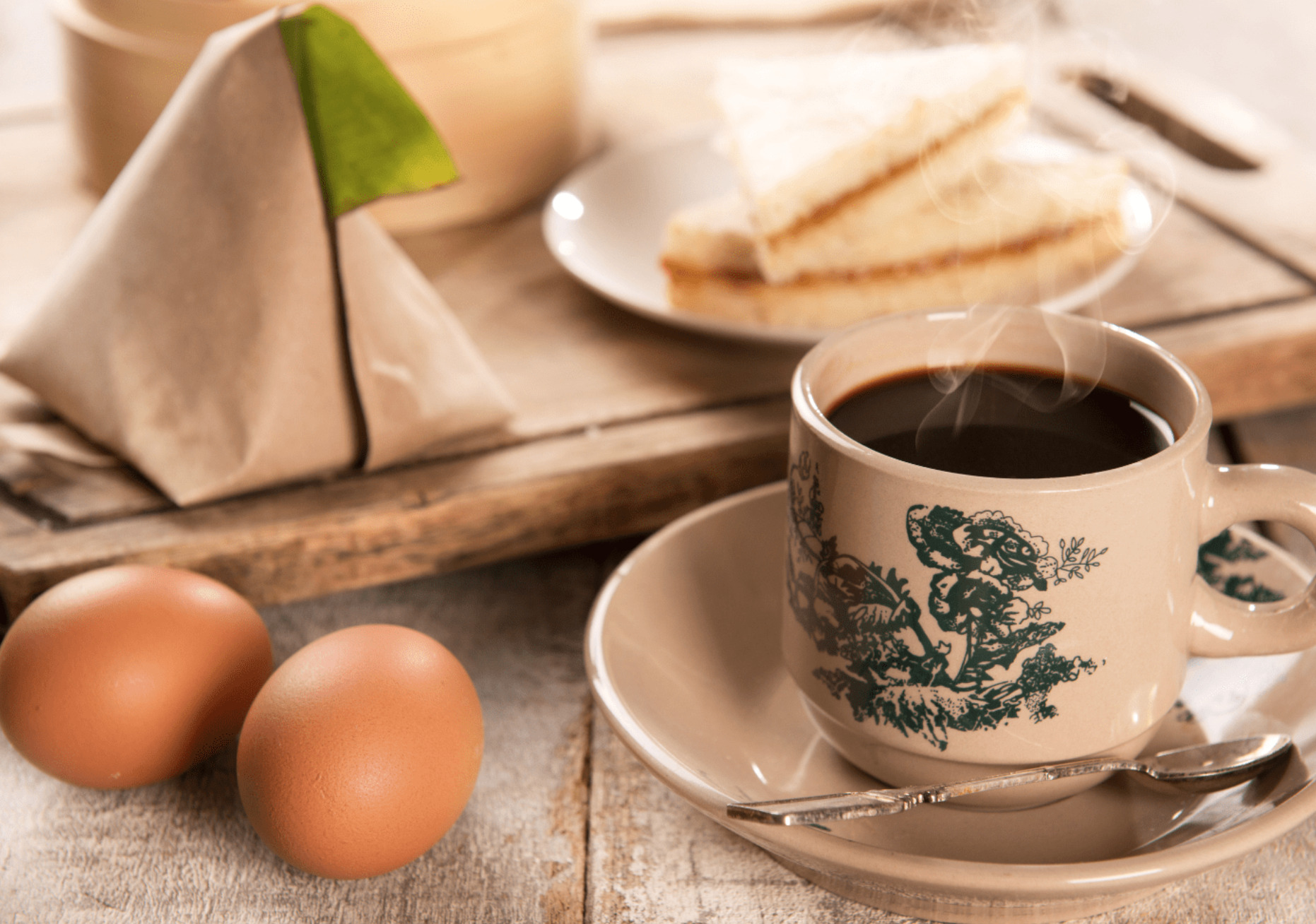For many Singaporeans, the traditional kopitiam is a hallowed culinary institution – one that has provided breakfast fuel for generations of people from all walks of life. The word ‘kopitiam’ itself reflects Singapore’s unique, multicultural DNA: Stemming from both Malay and Hokkien, it literally translates to ‘coffee shop’. And the classic trifecta of kopi, kaya toast, and soft-boiled eggs – a savory and sweet combination invented by Hainanese immigrants who arrived in the 19th century – can still be found in traditional outlets like Tong Ah Coffee House, Chin Mee Chin Confectionery, and YY Kafei Dian.
Singapore’s coffee landscape has changed dramatically over the years – and fears have been rife that kopitiams would be entirely left behind. These are not unfounded – the demise of the standalone kopitiam has been meticulously documented, and, today, kopi is more commonly served in open-air food courts than kopitiams themselves.
Still, the beloved beverage is also seeing a revival of sorts among younger Singaporeans. Is kopi about to come into a new lease on life?
The notion of craft often comes up in discussions surrounding third-wave coffee, but few are aware of just how labor-intensive Nanyang-style kopi roasting can be. Batches of robusta beans are roasted at 180°C with sugar and butter to create the distinctly nutty-yet-sweet flavour that kopi has come to be known for. And up until the 1960s, it was common practice for coffee stalls to roast their own beans.
Today, it’s a dying art with fewer than ten traditional roasteries in operation. Citing low profit margins and the lack of successors, companies like Kim Guan Guan and Fresh Roaster, which are some of the last few establishments that continue to manufacture kopi blends using traditional methods, are now confronted with an existential threat.
Third-wave coffee is one serious driver of this. The arrival of specialty coffee into Singapore in the late 2000s saw the birth of a new national pastime: Café-hopping. Coffee was no longer just a beverage – it transformed into an entire aesthetic that signalled new consumer taste, and a stepping stone to a more aspirational lifestyle.
Young people were increasingly eschewing their kopi fix in favor of specialty concoctions served in Instagrammable cafés, and a flurry of café-hopping lookbooks and vlogs took over social media. Meanwhile, 68% of Singaporean Gen Zers say they’re always on the hunt for the next cool thing, and for a while, coffee – not kopi – was it.
Second-wave coffee establishments have also displaced kopi and the traditional kopitiam. While global coffee chains like Starbucks have been firmly entrenched on the island since the late 1990s, Singapore’s $2.7 billion coffee market is now a new battleground for the likes of China’s Luckin Coffee and Canadian giant Tim Hortons. The coffee landscape is more saturated than ever. Add established homegrown chains like Ya Kun Kaya Toast and Toast Box into the mix, and it’s no wonder that old-school kopitiams have dwindled in numbers over the years.
Despite these challenges, not all hope is lost, thanks to the rise of a new generation of kopi revivalists. Take Faye Sai, a 34-year-old second-generation business owner who runs Coffee Break, a kopi stall with outlets in Amoy Street Food Centre and Hong Lim Food Centre. Sai is one of the country’s most prominent “hawkerpreneurs”, a term referring to young upstarts who are ditching well-trodden career paths to become hawker chefs as part of broader attempts to preserve Singapore’s hawker culture.
Dedicated to spotlighting her grandfather’s kopi-making legacy, Sai’s savvy business development strategy involves TikTok marketing, as well as e-commerce to reinvent kopi for younger crowds. From traditional kopi-o served in paper cups with chic logos to pumpkin spice lattes brewed in a hawker setup, Coffee Break has it all.
In a similar manner, businesses like Kopi More, Nanyang Kopi Kia, and Generation Coffee Roasters are now setting up shop in hawker centers across the nation, infusing kopi with diverse and contemporary brewing techniques to champion a hybridised coffee culture that still retains a uniquely Singaporean flavor.
Gen Z’s obsession with TikTok hacks and DIY culture has also trickled into their beverages – spurring younger consumers to become increasingly creative with their approach to kopi. Reminiscent of the dalgona coffee craze that hit during lockdown, Singaporean TikTokers are now creating tutorials for home-brewed cuppas that taste like they came straight out of the kopitiam.
And brands have been responding to people’s shapeshifting appetites for kopi – whether it’s Sabana Nanyang Coffee releasing kopi home brew kits or local artisanal ice cream brand Creamier tapping Kim Guan Guan to launch a limited edition kopi peng flavor in conjunction with National Day.
Especially for Gen Y and Z, nostalgia is a key driver of re-engagement with kopi culture. Having come of age in an era of never-ending crises, these are the generations who are the most enamored with the past as a source of comfort. Particularly in the case of Singapore, where constant redevelopment can challenge relationships to local heritage, simpler joys like kopi give young Singaporeans a means to stay rooted in a constantly changing world.
But, as they’ve demonstrated, nostalgia doesn’t mean always sticking to tried and tested recipes or dismissing innovation. Order a sea salt caramel kopi latte, and you might be in for a familiar surprise.
Elly Lau is a behavioural analyst at Canvas8, a global behavioural insights practice operating out of London, LA, New York, and Singapore.












 Back
Back